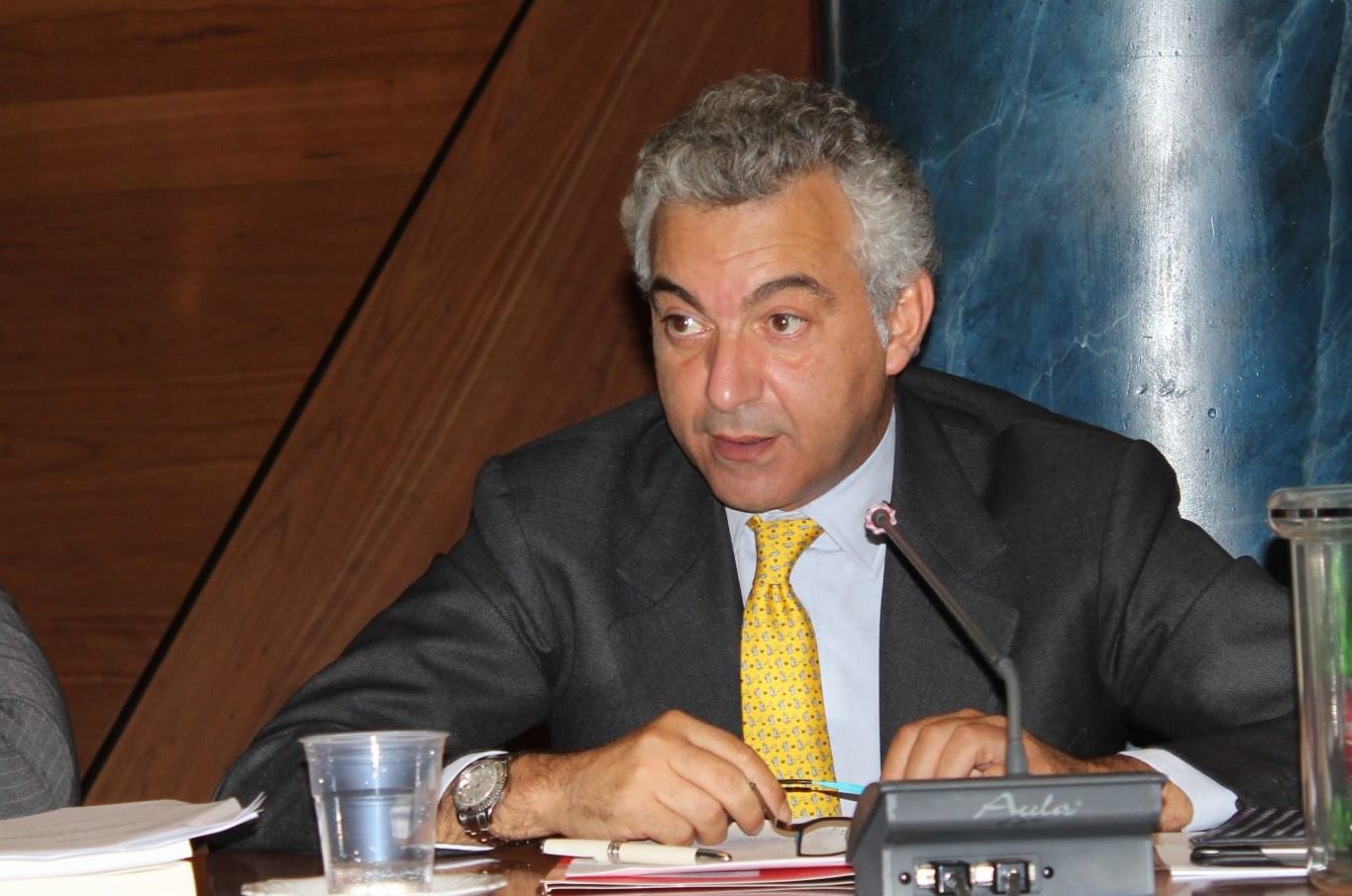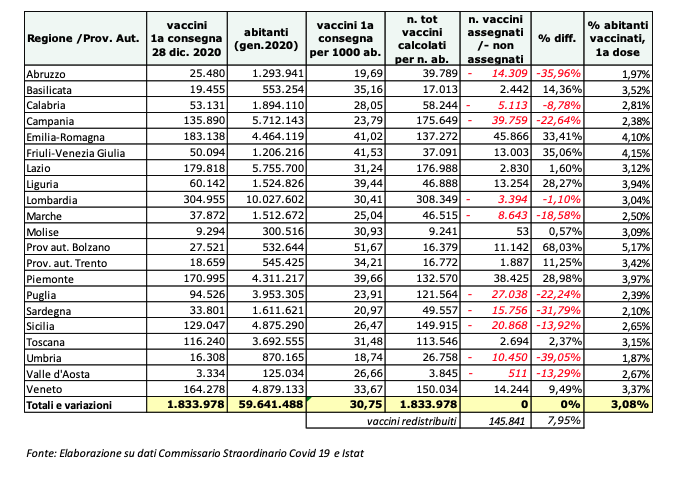How and why some regions have more vaccines than others

Enrico Martial's article
The state distributes vaccines in no particular order, it seems to mean. The criterion of the number of inhabitants, which was taken into account by the European Commission for the booking, purchase and distribution of Covid 19 vaccines in the Member States (1.3 billion doses, of which 202 million in Italy) is not strictly taken up by the state administration (ie by the extraordinary commissioner Domenico Arcuri), but is associated with other criteria, which have not yet been the subject of public communication.
The overall difference in the first delivery of vaccines affects 145,841 doses out of 1,833,978, calculated on the total allocations declared by Region, ie 7.95% of the allocation. However, the gap becomes more relevant when looking at specific cases, with some Regions more advantaged or neglected than others.
Among those that received less than the number of inhabitants, in this first delivery, we should mention Umbria (10,450 fewer doses, equal to 39.05%), Abruzzo (14,309 fewer doses, equal to 35, 96%), Sardinia (15,756 doses, equal to 31.79%).
Those that receive more than the population criterion are Friuli Venezia Giulia (13,003 more doses, equal to 35.06%), Emilia Romagna (45,866 more doses equal to 33.41%), Piedmont and Liguria (respectively 38,425 and 13,254 doses, equal to 28.98% and 28.27% more). The Province of Bolzano stands out among all of them, to which 11,142 doses more than the criterion of the number of inhabitants were sent, equal to a 68.03% increase.

Overall, the people who will receive the first dose of vaccine will be 3.08% of the population for the whole country, which however drops to 1.87% in Umbria and 1.97% in Abruzzo, while it rises to 5.17%. in the province of Bolzano and 4.10% in Emilia Romagna.
In the press conference of 17 December of the extraordinary Commissioner Domenico Arcuri, news was also given of the distribution of the equipment necessary for the conservation of the Pfizer-BioNtech vaccine, then insured in 222 points equipped with ULT cells, which will become 289 after January 7: it is possible that part of the variations are due to the conservation capacity, which has not been left to the organization of the Regions. Moreover, Valle d'Aosta – which has one of these cold rooms – received 13.92% fewer vaccines, a reduction then perhaps due to preparation delays, considering that the same ASL Valdostana expected up to a few days ago to start vaccinations from mid-January.
Another criterion may come from the same requests from the Regions, which sent on 12 December the (almost definitive) data of the population to be vaccinated in the first phase, together with the confirmation of the assessments on the membership rates, on the personnel assigned to vaccinations, on the organization double booking (for the first dose and the recall). The second supply, according to Commissioner Arcuri, will be 2,507,700 doses.
Finally, it should be noted – as an indicator of organizational and communication fatigue in the State Administration – that in the slides of the extraordinary Commissioner of 17 December a second table showed the regional distribution of doses with some differences (but the first table we used shows the data then effectively communicated to the Regions), and that in the same first table the sum of the partials reported three doses that are not found in the total sum (1,833,978 doses instead of 1,833,975).
This is a machine translation from Italian language of a post published on Start Magazine at the URL https://www.startmag.it/sanita/come-e-perche-alcune-regioni-hanno-piu-vaccini-di-altre/ on Thu, 31 Dec 2020 16:30:12 +0000.
